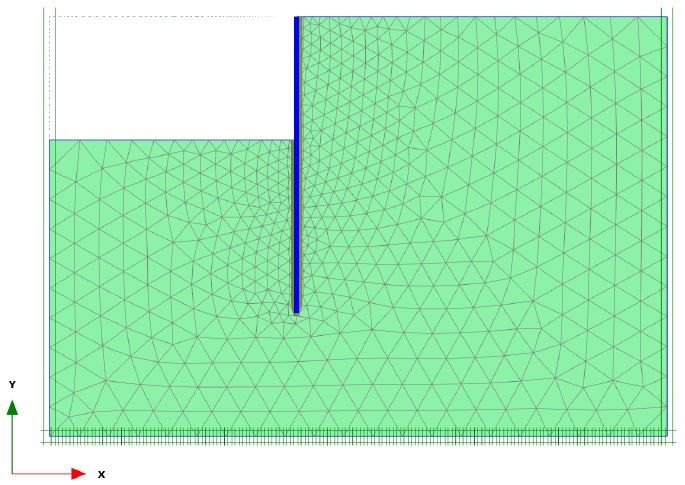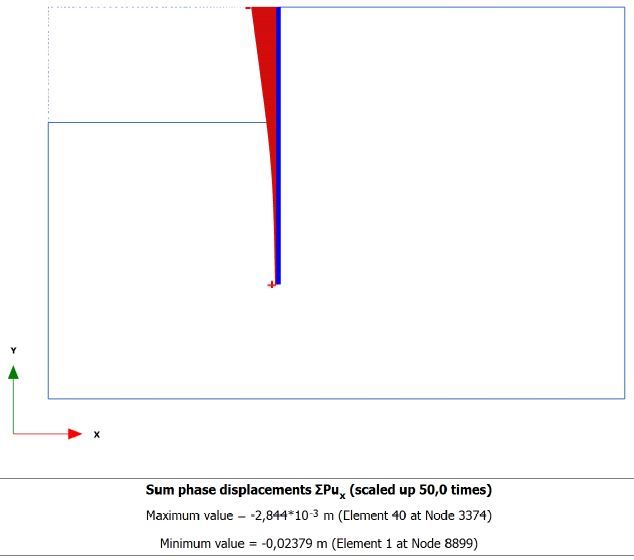
Validate an MSE wall ONLY in PLAXIS 2d Software. Moreover, the difference between the axial force and extreme displacement between the upper and lower most geogrids were also presented. Finite Element Analysis & Geotechnical Engineering Projects for 1500 - 12500. The horizontal and vertical movements of the wall were also studied individually and all results were presented in appropriate graphical forms. Based on the parametric studies, charts were developed to represent the effect of various parameters on the displacement of the MSE wall. After that, parametric studies were conducted.

The simulated model results are similar to the displacement observed in the field. These results present the reference model or model calibration. The computer program PLAXIS is used to determine the possible causes, pattern and mode of failure. This study presents the results of investigations to determine the causes of failure. An extensive geotechnical investigation program was undertaken to investigate the MSE wall failure. The top of MSE wall moved about 12 inches to 18 inches. This study presents the failure analysis of a segmental block, MSE retaining wall located in Rockville, Maryland. Figure 4-20 Graph of Plaxis 2D 25mm Stage-1 internal settlement horizontal pressure. However, failure of MSE wall has become a problem for all agencies using them. Buckling of wall panels in 2-Stage MSE wall (Gerber 2011). MSE walls are reliable, constructible, and cost effective.
Arbitrary number of inserted forces (anchors, safety fences, etc.Mechanically Stabilized Earth (MSE) retaining walls have been increasingly used in many federal, state and private projects over the last 20 years.  Arbitrary number of surcharges applied to structures (strip, trapezoidal, concentrated load). Various kinds of slopes: prefabricated blocks at the front face of the wall, simple slope or slope with berms (including optional cover). Automatic generation of reinforcement position. The models were implemented in the finite element program Plaxis 2D AE and were aimed to evaluate the. PLAXIS automatically recognises clusters based on the input of geometry lines. This paper describes two numerical models that were performed to study the dynamic interaction between a crusher, a mechanically stabilized earth wall and a stockpile for the primary crusher at important mining project in Peru.
Arbitrary number of surcharges applied to structures (strip, trapezoidal, concentrated load). Various kinds of slopes: prefabricated blocks at the front face of the wall, simple slope or slope with berms (including optional cover). Automatic generation of reinforcement position. The models were implemented in the finite element program Plaxis 2D AE and were aimed to evaluate the. PLAXIS automatically recognises clusters based on the input of geometry lines. This paper describes two numerical models that were performed to study the dynamic interaction between a crusher, a mechanically stabilized earth wall and a stockpile for the primary crusher at important mining project in Peru. 
Clusters: Clusters are areas that are fully enclosed by lines.

A line can have several functions or properties.
#Plaxis 2d mse wall verification#
Verification of global stability at circular slip surface (Bishop, Spencer) incl. boundaries and discontinuities in the geometry such as walls or shells, separations of distinct soil layers or construction stages. Verification of slip on georeinforcement. Verification of bearing capacity of foundation soil. Verification of slip and overturning of arbitrary part of the wall (dimensioning). Verification of fictitious wall against slip and overturning In this study, 2D Finite element model is developed using PLAXIS to represent the performance of anchored sheet pile wall, stress analysis and deformation characteristics of ground and bending moment distributions in sheet pile wall at all vulnerable locations are identified. Verification analysis can be performed employing EN 1997-1, LRFD or classical approach (limit states, factor of safety). Built-in database of available georeinforcement (geogrids) – Fortrac, Tensar, Miragrid, KB-grid, Acegrid, Secugrid, Enkagrid, Paralink, Paragrid etc. The main features of GEO5 MSE Wall program are: This program is used for verification of mechanically stabilized earth walls and segmental retaining walls reinforced by geogrids (georeinforcements).








 0 kommentar(er)
0 kommentar(er)
